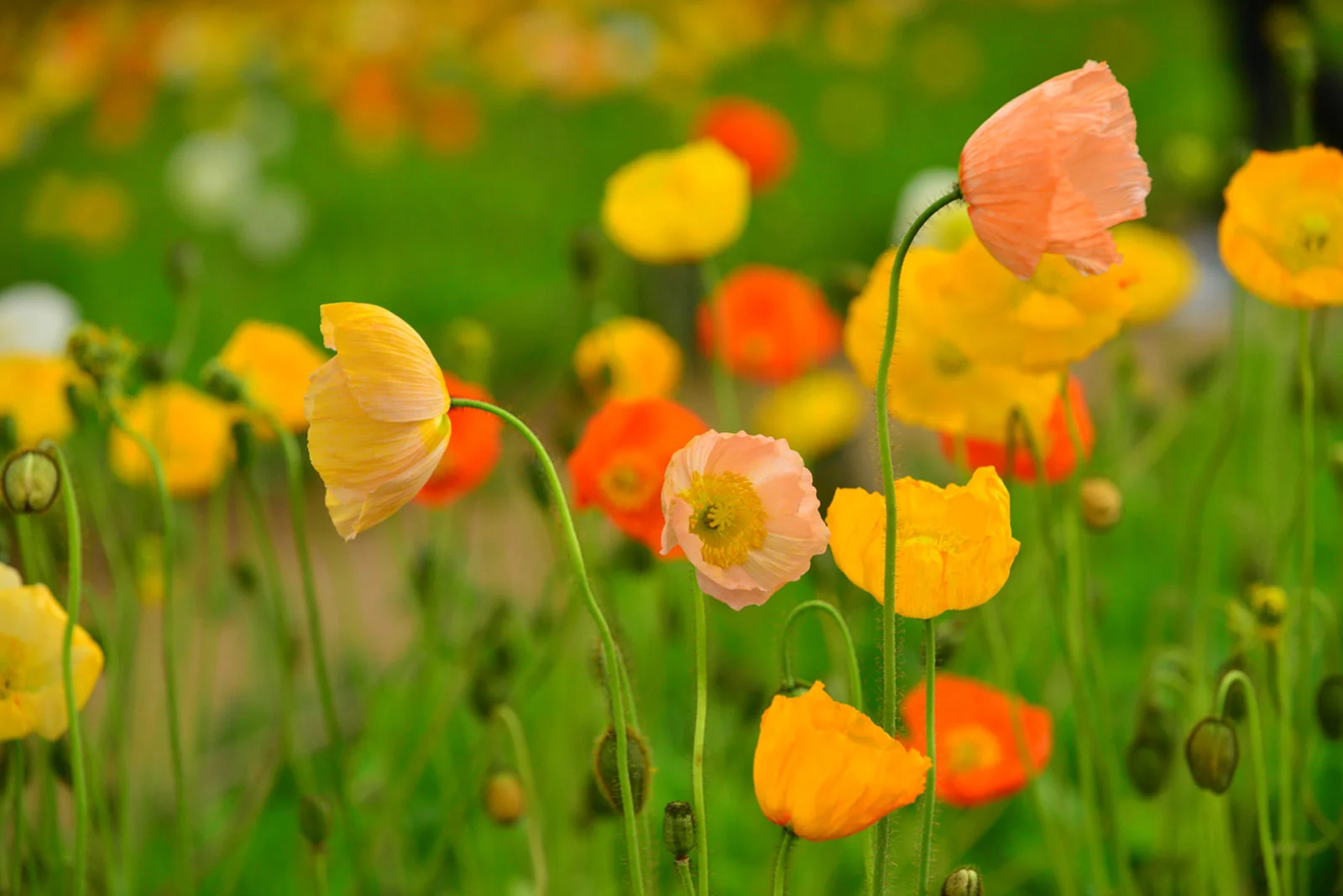
The Iceland Poppy, scientifically known as Papaver nudicaule, is a captivating and enigmatic flowering plant that thrives in colder climates. Native to the subpolar regions of Iceland, this delicate flower has captured the hearts of botanists, garden enthusiasts, and nature lovers alike with its vibrant colors and unique characteristics. In this article, we will explore 17 fascinating facts about the Iceland Poppy, shedding light on its history, symbolism, and intriguing features. From its association with Norse mythology to its ability to bloom in the harsh Arctic conditions, the Iceland Poppy is a plant that continues to spark curiosity and admiration. So, let’s delve into the enchanting world of this extraordinary flower and discover its secrets.
Key Takeaways:
- Iceland Poppies are hardy perennials with vibrant colors, symbolizing hope and resilience. They attract butterflies, are easy to grow, and have cultural and medicinal significance.
- These fragrant-free beauties from arctic regions have a short blooming period but a long vase life. They are deer-resistant, pollinator-friendly, and popular in floristry, adding elegance and charm to any garden or floral arrangement.
Vibrant Colors
The Iceland Poppy (Papaver nudicaule) is renowned for its vibrant and diverse range of colors, including shades of yellow, orange, pink, and white. These captivating hues make them a popular choice for gardens and floral arrangements.
Hardy Perennials
Unlike other poppy varieties, Iceland Poppies are hardy perennials, meaning they can survive cold temperatures and bloom year after year. This trait makes them a great addition to any garden, adding bursts of color even in harsh climates.
Symbolic Meaning
Iceland Poppies hold symbolic meanings, often associated with peace, consolation, and remembrance. They are commonly used in memorial gardens or to honor loved ones.
Fragrance-Free Beauties
One interesting fact about Iceland Poppies is that they are fragrance-free. Despite their stunning appearance, they do not possess a strong scent like other flowering plants.
Short Blooming Period
Iceland Poppies have a short blooming period, usually lasting for a few weeks in late spring or early summer. However, their vivid colors and delicate petals make them an unforgettable sight during this time.
Resilience in the Cold
These hardy flowers have the ability to withstand freezing temperatures, which allows them to thrive in colder regions such as Iceland, from which they derive their name.
Easy to Grow
Iceland Poppies are relatively easy to grow from seeds or established plants. They prefer well-draining soil and full sun exposure, making them an ideal choice for both beginner and experienced gardeners.
Attracts Butterflies
These delicate blooms act as magnets for butterflies, attracting these beautiful creatures to your garden and providing a source of pollination.
Medicinal Uses
In traditional herbal medicine, Iceland Poppy extracts were used to treat various ailments such as pain relief, insomnia, and respiratory issues.
Cultural Significance
Iceland Poppies hold cultural significance in several countries. In Norway, they are considered a national symbol and are associated with St. Olaf’s Day. In Iceland, they symbolize resilience and optimism.
Longevity in Vase
When cut and placed in a vase, Iceland Poppies have an impressive vase life. With proper care and regular water changes, they can last up to a week, adding elegance and charm to any floral arrangement.
Deer-Resistant
Iceland Poppies have a natural resistance to deer, making them a great choice for gardens located in areas where deer are a common nuisance.
Symbol of Hope
Due to their vibrant colors and resilience, Iceland Poppies are often seen as a symbol of hope and new beginnings, bringing joy and positivity wherever they bloom.
Ornamental Value
Aside from their natural beauty, Iceland Poppies also serve as ornamental flowers. They are frequently used in floral arrangements, adding a touch of elegance and sophistication.
Native to Arctic Regions
As their name suggests, Iceland Poppies are native to arctic regions, including Iceland and northern parts of Europe, where they thrive in the colder climates.
Pollinator-Friendly
Iceland Poppies attract not only butterflies but also bees. Their nectar-rich blooms provide a valuable food source for these essential pollinators, aiding in maintaining ecological balance.
Popularity in Floristry
Due to their captivating appearance and vase life, Iceland Poppies are highly sought after by florists. They are often incorporated into bouquets and floral arrangements to add a touch of elegance and color.
Conclusion
In conclusion, Iceland Poppy is a fascinating and enchanting flower that captivates with its vibrant colors and delicate beauty. With its origins in the frosty landscapes of Iceland, this poppy has adapted to withstand harsh conditions and has become a symbol of resilience and perseverance.Not only is Iceland Poppy visually stunning, but it also holds a variety of symbolic meanings and practical uses. Whether you’re a flower enthusiast or simply appreciate the wonders of nature, the Iceland Poppy is a must-have addition to any garden.With its unique characteristics and rich history, the Iceland Poppy continues to intrigue and inspire people around the world. So, embrace the allure of this enigmatic flower and bring a touch of Icelandic magic to your own garden.
FAQs
Q: What is an Iceland Poppy?
A: The Iceland Poppy, also known as Papaver nudicaule, is a flowering plant native to the subpolar regions of Europe and North America, including Iceland and Greenland.
Q: What colors do Iceland Poppies come in?
A: Iceland Poppies come in a range of vibrant colors, including white, yellow, pink, orange, and red. Some varieties even have a combination of colors, creating a beautiful gradient effect.
Q: Can Iceland Poppies tolerate cold weather?
A: Yes, Iceland Poppies are hardy flowers that can withstand cold temperatures and frost. In fact, they thrive in cooler climates and are known for their ability to bloom in early spring or late winter.
Q: How tall do Iceland Poppies grow?
A: The height of Iceland Poppies can vary, but on average, they grow to be around 12 to 14 inches tall. However, some varieties can grow up to 18 inches in height.
Q: Do Iceland Poppies require a lot of sunlight?
A: While Iceland Poppies prefer full sun, they can tolerate partial shade as well. It’s best to provide them with at least 6 hours of sunlight per day for optimal growth and blooming.
Q: How long do Iceland Poppies bloom?
A: Iceland Poppies have a relatively short blooming period, typically lasting for 2 to 3 weeks. However, deadheading the spent flowers can prolong the blooming season.
Iceland Poppy's enigmatic nature captivates flower enthusiasts worldwide. Vibrant colors, resilience, and symbolic meaning make this arctic beauty a must-know for gardeners and nature lovers alike. Want to learn more about Iceland Poppy's surprising characteristics? Check out our article on 14 surprising facts that will leave you even more enchanted by this stunning flower.
Was this page helpful?
Our commitment to delivering trustworthy and engaging content is at the heart of what we do. Each fact on our site is contributed by real users like you, bringing a wealth of diverse insights and information. To ensure the highest standards of accuracy and reliability, our dedicated editors meticulously review each submission. This process guarantees that the facts we share are not only fascinating but also credible. Trust in our commitment to quality and authenticity as you explore and learn with us.


